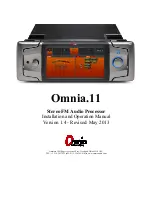
Chapter 5: WebPAM
101
2.
Click the Logical Drive
icon of the offline logical drive.
3.
Click the
Activation
tab in Management View.
4.
Click the
Activation
button.
The logical drive converts to
Critical
status. You can now rebuild the logical
drive. See “Rebuilding a Logical Drive” on page 93.
Responding to a Critical or Offline Logical Drive
When a Physical Drive Fails in a RAID 0 Logical Drive
A non-fault tolerant logical drive—RAID 0—goes offline when a physical (disk)
drive is removed or fails. Since the logical drive is not fault tolerant, the data
stored in the logical drive is no longer accessible.
If one physical drive fails, all of the data on the RAID 0 logical drive is lost. You
must replace the failed drive. If the logical drive had more than one physical
drive, delete the logical drive and re-create it. Then restore the data from a
backup source.
When a Physical Drive Fails in a RAID 1, 5, or 10 Logical Drive
A RAID 1, 5, or 10 logical drive goes critical when a physical (disk) drive is
removed or fails. Due to the fault tolerance of the logical drive, the data is still
available and online. However, once the logical drive goes critical, it has lost its
fault tolerance and performance may be adversely affected.
The following will occur when a physical drive fails or goes offline:
•
The FastTrak Controller’s audible alarm sounds (if the alarm is enabled).
•
The SuperSwap Status LED changes from green to red.
•
WebPAM displays a message in the upper right corner of the Host PC’s
monitor screen. This message appears even when your browser is closed.















































